UPDATE:
So it seems to be an open issue now. So I guess until this is done I will have to rely on .NET Core API reference and pray I won't hit one of the 43 APIs that .NET Framework 4.6.1 doesn't support but are officially supposed to be...
Also relying on .NET Core API reference and considering the same as .NET standard could be badly surprising. For example when I take a look at the namespace list I can see System.Drawing but when clicking on it, we then realize this is an almost empty namespace containing only 6 structures.
Are there several namespaces like this? I don't know, I have to compare .NET core and .NET Framework documentation to get the answer.
ORIGINAL POST:
I'm trying to find the .NET Standard API reference.
On this page there are only links to .NET Core API reference and .NET Framework API reference.
Yes I've searched and I've read others SO questions. For example this answer points to .NET Core API reference instead of .NET standard and the same in this Github issue feed
But .NET Core and .NET Standard are different. .NET Core is the implementation of .NET Standard APIs.
One of the big problem I see here is for example based on the official documentation .NET Framework 4.6.1 will implement .NET Standard 2.0
Ok great, except that the .NET Standard Github readme page is also saying
On the other hand, .NET Standard 2.0 adds many APIs that .NET Framework 4.6.1 already supports. The delta looks as follows:
.NET Standard 2.0 adds 14,994 APIs that .NET Framework 4.6.1 already supports
.NET Standard 2.0 only has 43 APIs that .NET Framework 4.6.1 doesn't support Originally, we planned to simply elide those APIs from .NET Standard 2.0 in order to make it easier to understand what will work on .NET Framework 4.6.1.
However, we got a lot of feedback around this. You told us that this decision makes it really hard to reason about .NET Standard versioning rules. Thus, we decided to simplify this:
.NET Standard 2.0 will be a strict superset of .NET Standard 1.6. In other words, no breaking changes will happen between .NET Standard 2.0 and 1.x.
.NET Framework 4.6.1 will allow referencing binaries that are compiled against .NET Standard 2.0. Considering the number of APIs that .NET Framework 4.6.1 will not support is low and that these are all brand-new APIs with low adoption we believe this is a much better trade-off.
You can use API Port to scan a given application to make sure no code in your application depends on these APIs.
So what? Their solution to this problem is to scan a given application? So if I start a new project, giving the fact that I don't have code written yet, I would target .NET Standard and pray I don't end up with unsupported APIs that are supposed to be?
Also, are there other cases like this in other frameworks like Xamarin or UWP? What does that mean vNext exactly in the 2.0 column? Should I be worried of other unsupported APIs in other frameworks because Considering the number of APIs that [Framework name] will not support is low and that these are all brand-new APIs with low adoption we believe this is a much better trade-off?
The closest answer I can find to this question is by looking at the NETStandard.Library NuGet package's dependencies. However that gives me dependencies of the 1.3 version (not 1.6 or I don't really understand this section), and that doesn't give me APIs reference of the next 2.0 which are supposed to be already determined.
Can't we have a full documented list of APIs really supported for each .NET Standard version? The only goal of .NET Standard is to provide developers this very important information, so why can't I find it?
